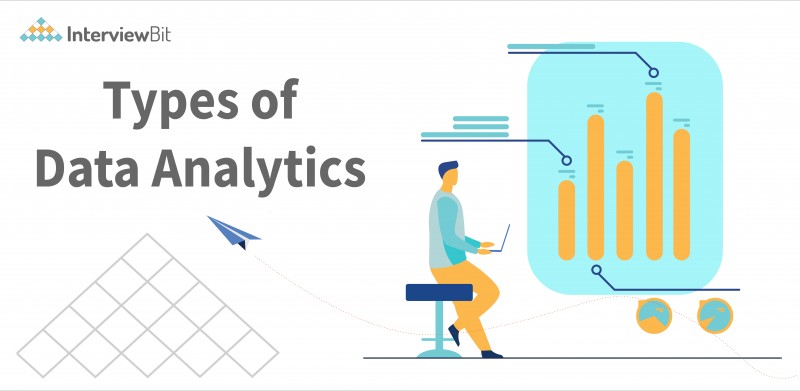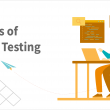Introduction
There’s no point in having all the raw data in the world if you don’t know how to use it for your business’s benefit. Using analytics to maximize the use of data is helping organizations reach new levels of success. Organizations can use data analytics to understand their consumers, enhance their advertising campaigns, personalize their content, and improve their products to reach their goals. Business or Data Analysts use data analytics to maximize their efforts to grow their businesses. Despite raw data’s enormous potential, you cannot capitalize on it without the right data analytics tools and types of analytics processes. There are many tools available that are used for data analytics such as Microsoft HDInsight, Skytree, Spark, Xplenty, etc.
Before discussing the different types of data analytics, let us first understand what is the meaning of data analytics.
What is Data Analytics?
In business decision-making, data analytics can be defined as the process of cleaning, transforming, and modeling data. The goal of Data Analysis is to extract useful information from data and make decisions based on the results of the analysis.
Confused about your next job?
A simple example to understand data analytics can be, sometimes we have to make decisions in our everyday life based on our past experiences, or sometimes we analyze what will be the future consequences of that particular decision. All this is data analytics. What an analyst does for business purposes is now called Data Analysis.
Data Analytics can be used in Business Analysis to help organizations understand their consumers’ patterns and needs. Ultimately, companies can boost business performance and improve products using various types of data analytics. As soon as the organization collects big data, the next important step is to start analyzing it. Many companies are not sure where to begin, what kind of analytics can foster business growth, and what these various types of analytics mean.
So, let’s discuss major data analytics types.
Types of Data Analytics
Here, we begin with the simplest type and work our way up to the most complex. Generally, the more complex an analysis is, the more value it brings.
There are basically 4 types of data analytics:
- Descriptive Analytics
- Diagnostic Analytics
- Predictive Analytics
- Prescriptive Analytics
1) Descriptive Analysis:
The first kind of data analysis is descriptive analysis and it is the foundation of all data analytics. It is most commonly used in business today 90% of businesses use it. It is at the core of all data insights. By summarizing past data, the descriptive analysis answers the question, “what happened.”.By using historical and current data, descriptive analytics can identify trends and relationships. In descriptive analytics, a variety of visual tools are used to present results, including line graphs, pie charts, and bar charts. Descriptive analytics identifies many different relationships between a customer and a product as opposed to predictive analytics which focuses on predicting customer behavior.
Applications of Descriptive Analysis in Business:
- Your organization may already be using descriptive analytics if it tracks engagement via social media analytics or web traffic.
- Monthly revenue reports
- Assessing learners’ completion time for a course
- Large amounts of data about users’ in-platform behaviour are gathered by the team of Netflix, which has a track record of heavily relying on data.
2) Diagnostic Analysis
The next step is to examine why it happened after asking the main question, “what happened?”.This is when diagnostic analysis comes into play. A diagnostic analysis can be carried out manually, using an algorithm, or using statistical software (such as Microsoft Excel). The purpose of diagnostic analytics is to identify the causes of trends and correlations between variables based on data. This can be regarded as the next step after identifying trends with descriptive analytics. Businesses use this type of analytics to gain a deeper understanding of a problem provided they have enough data at their disposal. Diagnostic analytics is used to detect anomalies and identify causal relationships in data. For eg: When eCommerce giants like Amazon drill down into the profits and sales of various products like Amazon Echo, they can find out why they missed their overall profit margins.
Applications of Diagnostic Analysis in Business:
- An investigation of slow shipments in a particular region is conducted by a freight company.
- Analyzing which marketing activities increased trial registrations at a SaaS company
- Diagnostic analytics could help cybersecurity analysts determine the relationship between security ratings and data breaches, for instance.
- Many aspects of health care can be supported by diagnostic analytics, including diagnosing medical problems
3) Predictive Analysis
An advanced branch of data engineering, predictive analytics combines statistical modelling, data mining techniques, and machine learning to make predictions about future outcomes. Predictive analytics tell you what is likely to happen. It takes advantage of the advances of descriptive and diagnostic analytics to distinguish groups from exceptional cases and to predict future trends, making it a vital forecasting tool. Predictive analytics allows companies to identify risk and opportunity patterns in this data.
Applications of Diagnostic Analysis in Business:
- In Analytical Customer Relationship Management (CRM), predictive analysis is used for marketing campaigns, sales, and customer service to name a few
- Predictive analytics is used in fraud detection.
- Amazon uses predictive analytics combined with descriptive analytics (trends, patterns, exceptions) of historical shopping data to predict the probability of a buyer buying a product based on the date-time information.
- Predictive analytics can be used for financial predictions.
4) Prescriptive Analysis
The next step in predictive analytics is prescriptive analytics, where you can manipulate the future. Predictive analytics tells you “What should be done?” or “What can we do to make _______ happen?”.Techniques used in predictive analytics include graph analysis, simulation, complex event processing, neural networks, recommendation engines, and heuristics. As a result of prescriptive analytics, marketers and sales staff can be more precise with their campaigns and outreach to customers as they no longer need to rely on intuition and experience alone. A business can improve its service by using prescriptive analytics to determine what changes can be made to the customer experience (including price and product selection).
Applications of Prescriptive Analysis in Business:
- Prescriptive analytics and artificial intelligence are being used by most big data-driven companies (Apple, Facebook, Netflix, etc.) to improve decision making
- By combining operational and usage data with external factors like economic data and population demographics, Prescriptive Analytics can be used for healthcare strategic planning.
- In the transport industry, shippers produce massive amounts of data. These businesses can automate and build prescriptive models to make recommendations instead of employing armies of analysts and dispatchers.
- The financial sector can build algorithms to analyze historical trading data to measure the risks of trades. Using the analytics, they can decide how to size positions, how to hedge them, or whether to place trades at all.
Conclusion:
Data analytics is crucial for the development of any business, as it helps the company optimize its performance. The four types of analytics that Business Analysts use to unlock raw data’s potential to improve performance include descriptive analytics, diagnostic analytics, predictive analytics, and prescriptive analytics. It is important to note that algorithms cannot replace human discernment, even if they provide data-driven recommendations. Providing context and guardrails for algorithmic outputs requires your judgment and expertise.







 Join WhatsApp Group
Join WhatsApp Group


